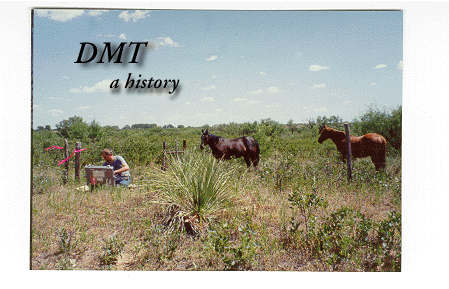![]()
Our Company
|
|
|
|
|
|
|
|
|
SEI and a sister company, Southport Exploration Associates, Inc. (SEA) were extensively involved in research, field testing, acquisition and interpretive methodology development and ground truth verification of telluric technologies from 1983 to 1993. In 1992, SEA dissolved all contractual relationships involving the telluric technology. By 1993, SEI through research and re-evaluation of all previous drilling results using telluric technologies, began to formulate the basics for a new technology based entirely on classical Magnetotelluric (M-T) theory. These concepts were reviewed with DEMEX in early 1993 and a Magnetotelluric system was conceived which was a radical departure from single field telluric or magnetic instrumentation. In 1993, SEI and DEMEX entered into an agreement to develop this new approach to Magnetotellurics. By late 1993, M-T instrumentation had been developed and was well into the testing stage. The instrumentation included an antenna system with five highly amplified signals from separate tuned antennas resolved to a resultant electric and magnetic signal output and recorded on digital tape. An analog computer was also constructed to demodulate the signal where a highly trained operator could plot Impedance vs. Depth log. A distortion pattern profile resulting from salt water, coal, or hydrocarbon is also plotted on the same log. Lastly, computer hardware was purchased and algorithms formulated to demodulate the electric and magnetic antenna outputs, and resolve them to an Impedance Log vs. depth format. These algorithms also display on the same log, indications of coal, hydrocarbons, or water by amplifying their associated minor electromagnetic phase distortions to a readable level. Thus, two independent systems were constructed, one an analog computer and one a digital algorithm, both designed to demodulate the signal from the antenna system. Testing of the systems proved the excellent reliability and repeatability of each. The total signal aspects afforded by the Magnetotelluric system demonstrated substantial gains in signal-to-noise resolution, and thus, afforded new discrimination levels. The new digital system proved to add a whole new dimension to signal integrity by its' independent cross-checking capabilities. Marketing of the new technology began in 1994, through Digital Magnetotelluric Technologies, a subsidiary of Southport Exploration, Inc. By late 1994, DMT was at workload capacity and remains so to date. The high resolution Magnetotelluric system has been used and demonstrated outstanding results virtually all of the oila nd gas producing states and in Alberta, Ontario, and Saskatchewan in Canada.The Technology has also been successfully employed in Mexico, Sultanate of Oman, India, Poland, Slovakia, Tunisia and the United Arab Emirates. The international projects were very important in establishing that high resolution Magnetotelluric signal conditions exist worldwide. |
|
|
|
DMT performs surface remote sensing surveys for the Oil and Gas (Classical O&G) (Horizontal), Coal (Coal), Solution Mining (Cavern Imaging), and Potash Mineral Exploration industries. Our exclusive instrumentation simultaneously utilizes five components of the Electric and Magnetic fields, which corrects many problems found with past telluric methods. The technology images electrical rock and fluid characteristics as a function of depth using the naturally propagating electromagnetic signals available at the surface. Demodulation of the field data is accomplished by either analog computer (Z-SCAN oil example) or Digital computer (DIGILOG oil example). Our technique analyzes much higher frequencies than classical MT which allows high-resolution subsurface sampling in the order of 5 feet rather than 100's or 1000's of feet to depths of 18,000 feet. Our final product is plotted in a depth vs. resistivity/fluid "log" format and readily correlates to standard industry "down hole" logs. In addition to oil, gas and coal subsurface imaging, DMT is very active in cavern imaging to add critical data for the solution mining industry Cavern Integrity. Please email us for additional information or more examples of our data. |
|
|
|
This site and all custom graphics ©1998-2016 Digital Magnetotelluric Technologies. |
